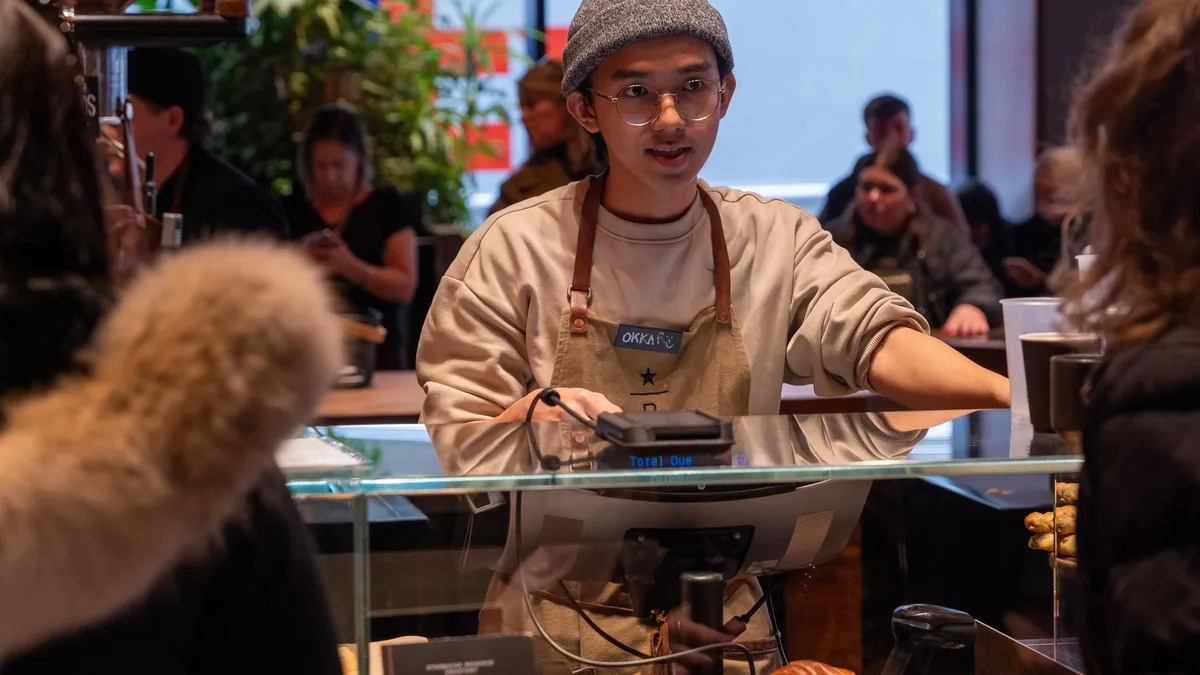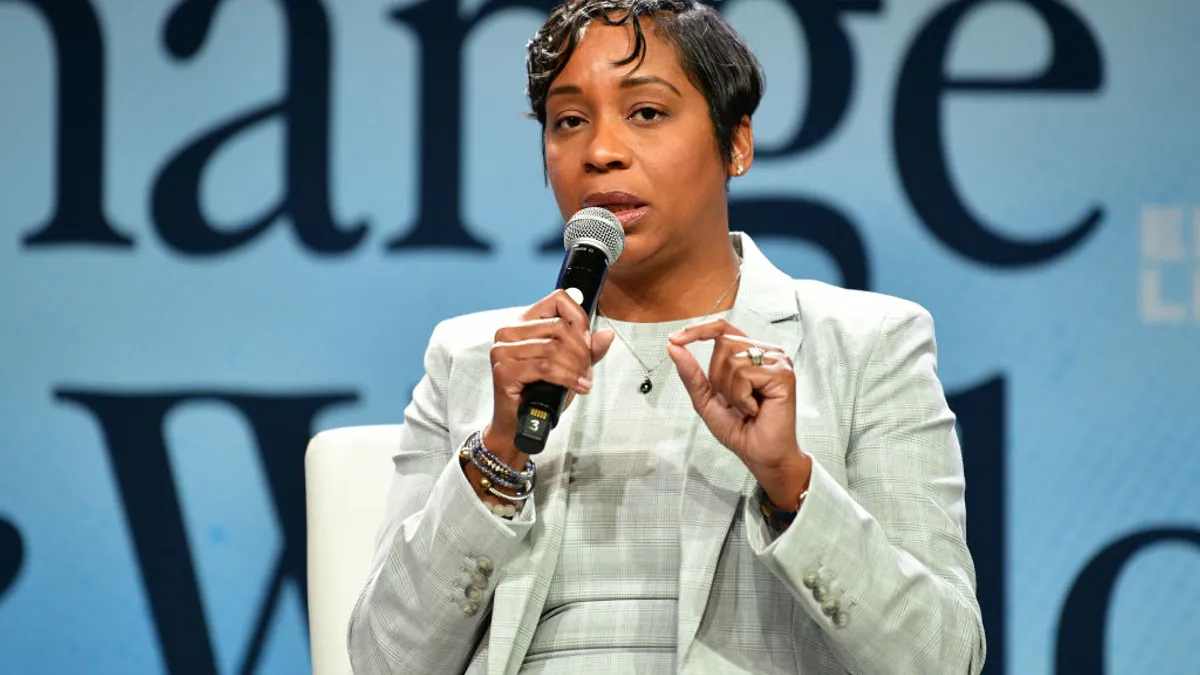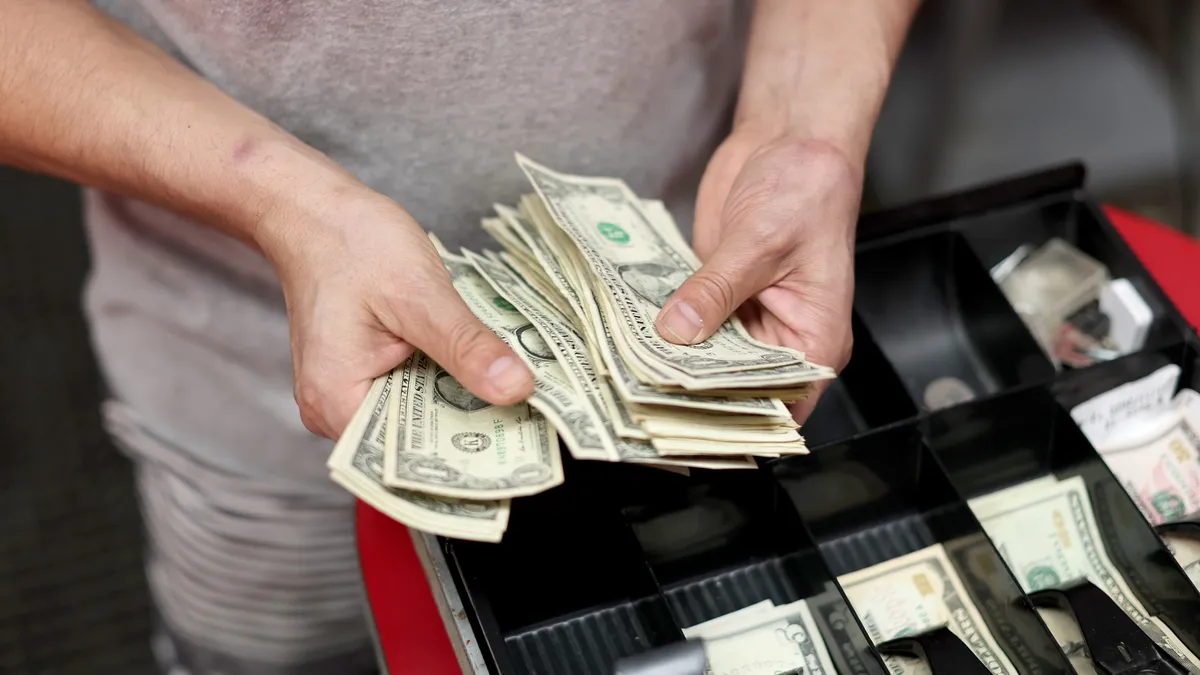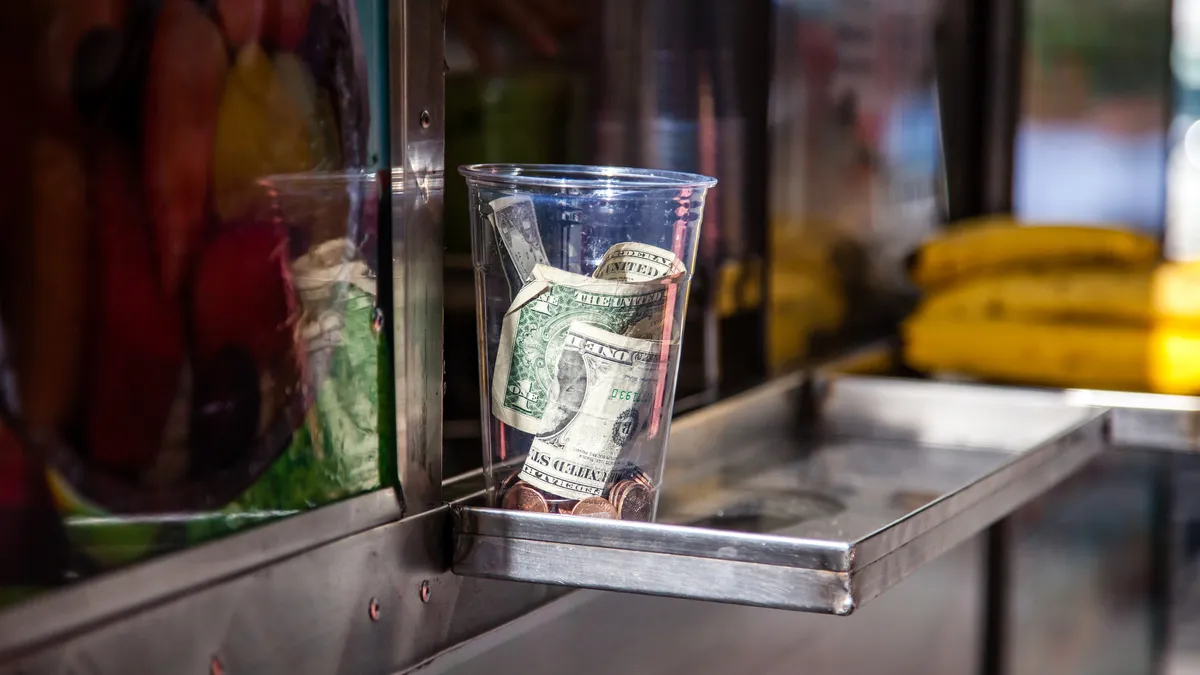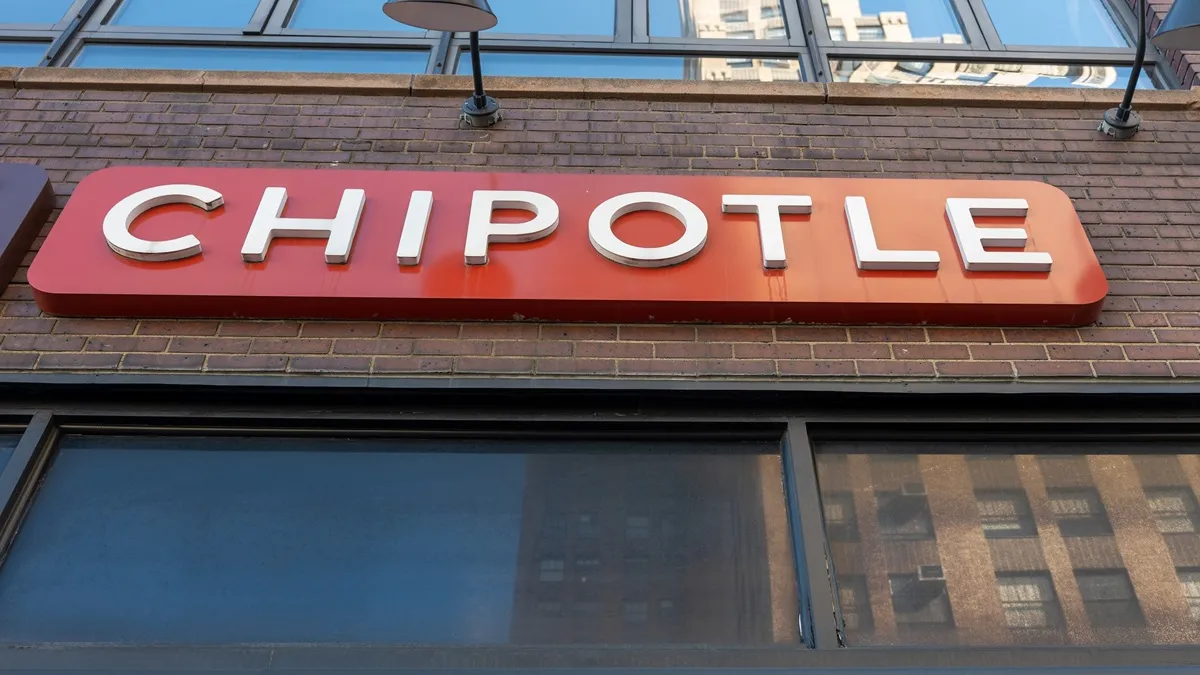Traffic at U.S. Starbucks stores plummeted during the chain’s fourth quarter, continuing a run of disappointing earnings results. But new CEO Brian Niccol, whose tenure began less than three weeks before the end of the quarter on Sept. 29, has a plan to win consumers back.
Starbucks wants to go back to being a coffeehouse.
That desire isn’t new. In a 2022 letter announcing a reinvention plan for the brand, then interim-CEO Howard Schultz called for the chain to make its stores into places that bring neighborhoods together. But Niccol announced during this week’s earnings call a series of concrete changes intended directly to make Starbucks more of a coffeehouse brand.
Condiments, ceramics and seats
To improve the feel of its stores, Starbucks will bring back ceramic mugs for in-store drinks, Niccol said. That change will eventually be accompanied by shifts in the design and aesthetics of stores to make them more welcoming and easier to spend time in.
“Our designers are talking about making sure we bring back the layers, the texture, the warmth,” Niccol said of the store interiors. “Those are the things that are really important.”
The brand will work to ensure its seats are more comfortable, and may revise some in-store policies. Niccol did not specify which policies might change.
“I want you to feel like you walked into a special place,” Niccol said.
He noted it would be a positive sign if consumers shifted from mobile-order-and-pay options to enjoying their beverages in-store. Baristas, Niccol said, had made it clear in his early weeks as CEO that they wanted a greater emphasis on dining rooms and on a coffeehouse feeling.
At the same time, Starbucks will bring back its coffee condiments bar which it eliminated during the early months of the COVID-19 pandemic. The bars mean customers can modify their own drinks by adding sugar or cream. That process, which customers have been advocating for, will be complete in 2025, Niccol said.
Speed of service is still an emphasis
The addition of condiment coffee bars may be part of a shift towards a coffeehouse vibe, but it has important practical implications. First, the condiment bar allows Starbucks to cut a task for its workers, with consumers able to add cream and sweeteners to their brewed coffees.
That shift accompanies other changes Starbucks is making to speed up orders. For instance, the company is adding new Clover Vertica brewers to serve drip coffee across its stores by the end of 2025. Starbucks is also changing the handoff of its brewed coffees, which take much less time to prepare than espresso drinks or customized beverages. Cashiers now will hand the coffee directly to consumers, Niccol said, rather than sending the drinks “down the line and ending up down at the counter” where other drinks are picked up.
This handoff means consumers who only order a coffee may see a significant reduction in wait times. Overall, Starbucks is targeting four minute or less throughput for its orders, Niccol said.
Niccol said the brand is looking to separate its mobile-order-and-pay (MOP) experience from its in-store experience. MOP has been key for Starbucks. Sharon Zackfia, a William Blair analyst noted that more than 30% of Starbucks’ orders in the U.S. come through the channel.
“A new algorithm is being developed to improve mobile order sequencing and enable faster throughput for both mobile and in-store orders,” Zackfia wrote in a note emailed to Restaurant Dive.
Niccol said he wants stores to create separate areas for drinks that are ready for customers to pick up.
“If you need to be quick, you can be quick, and we'll be on time with it,” he said.
Stores, Sirens and Staff
To support this ambitious plan, Starbucks is curtailing development to free up capital for renovations — even though what, exactly, its coffeehouse remodels will require is not yet certain, Niccol said.
But the chain hopes to speed up the deployment of its Siren System, a kitchen redesign intended to boost throughput that was first described by the company in 2022 and has hovered in a deployment limbo since. Alongside those equipment changes are shifts in labor employment and drinks building processes, called the Siren Craft System,
“We will continue to scale our investment in Siren equipment and Siren Craft processes to improve the in-store experience for our partners and customers,” Niccol said. Those two fronts will be key, Niccol said, to achieving that four-minute throughput.
However, as Chipotle discovered with adding expeditors to its food lines under Niccol, a key to improving throughput may not be renovations or new training programs but, simply, more labor.
“We may find it's going to require some additional hours, because at the end of the day I want to make sure that the teams are staffed to win every transaction,” Niccol said.



